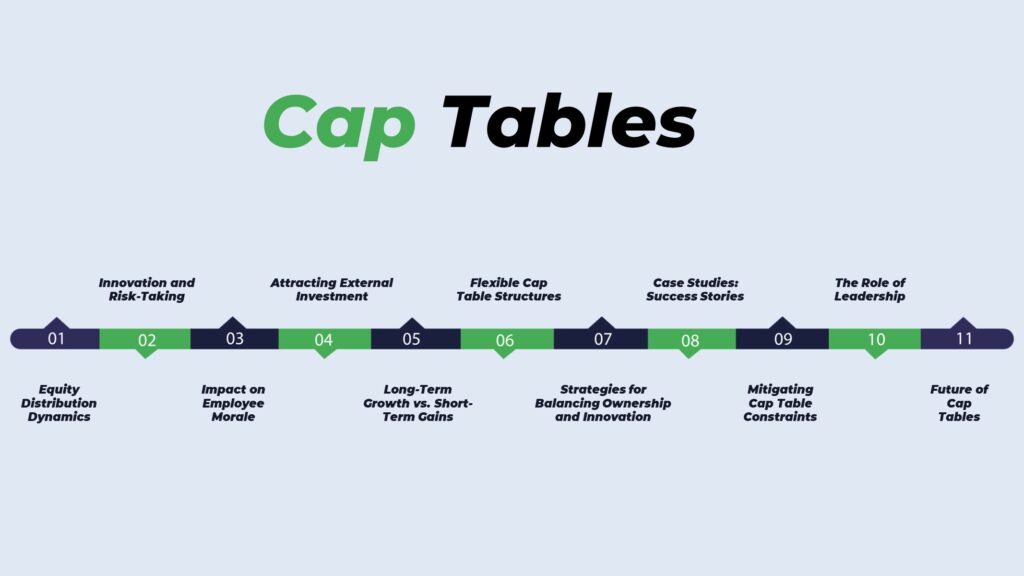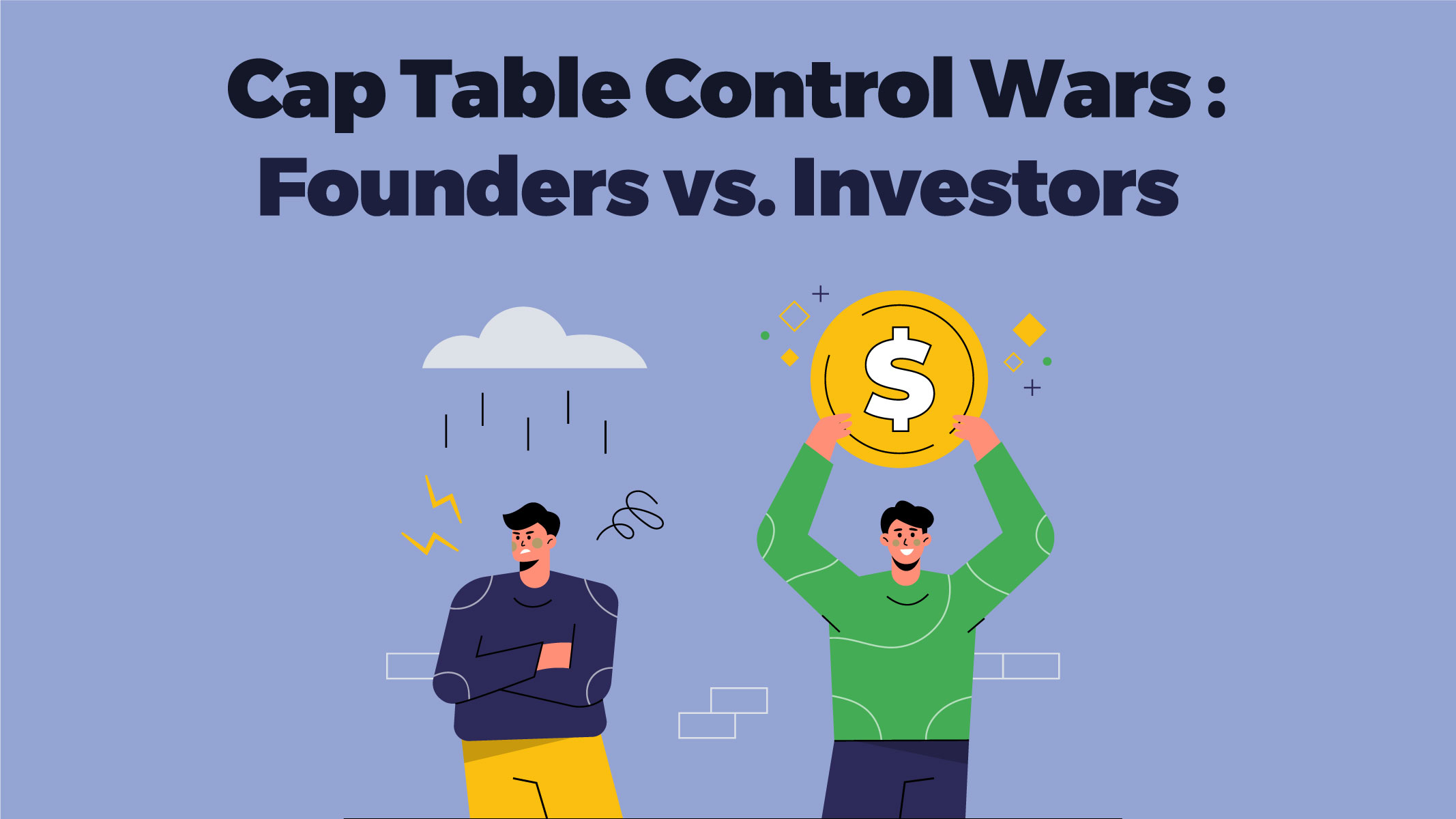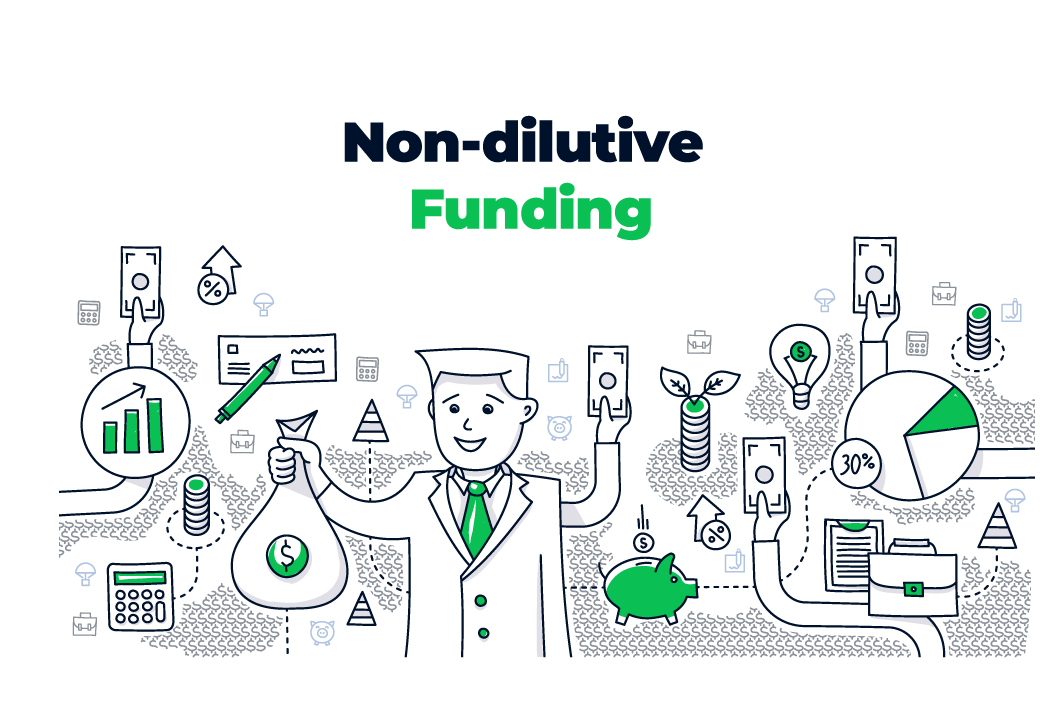The Cap Table Dilemma: Is It Stifling Innovation and Growth?
In the dynamic world of startups and businesses, the allocation of ownership is a crucial consideration. This has led to the development of the cap table, a fundamental document that outlines the equity distribution among stakeholders. While the cap table serves as a valuable tool for managing ownership percentages, there is an ongoing debate about whether it inadvertently hampers innovation and growth. In this article, we will delve into the cap table dilemma, exploring its potential effects on stifling innovation and growth in companies.
- Understanding Cap Tables
- Equity Distribution Dynamics
- Innovation and Risk-Taking
- Impact on Employee Morale
- Attracting External Investment
- Maximize Your Growth: Mastering Cap Table Management with CapTablePro!
- Long-Term Growth vs. Short-Term Gains
- Flexible Cap Table Structures
- Strategies for Balancing Ownership and Innovation
- Case Studies: Success Stories
- Mitigating Cap Table Constraints
- The Role of Leadership
- Future of Cap Tables
- FAQ
- Conclusion
Understanding Cap Tables
At the heart of every company’s structure lies a crucial document known as the cap table, short for capitalization table. This invaluable ledger serves as a comprehensive map, meticulously charting the intricate landscape of ownership distribution within the organization. Picture it as a blueprint that outlines who holds a stake in the company—a detailed record of the individuals and entities that contribute to its journey.
In essence, a cap table is a dynamic record that goes far beyond numbers; it encapsulates the stories of shareholders, founders, employees, and investors who collectively shape the company’s trajectory. It captures the essence of ownership, defining the roles each party plays and the stakes they hold. From the founders who ignited the spark of an idea to the investors who saw the potential and provided the fuel, every individual’s involvement is etched onto this table of ownership.
As this document takes shape, it weaves together a narrative of equity distribution, reflecting the foundation upon which the company rests. Each entry represents more than just a numerical value—it signifies trust, belief, and commitment. Whether it’s a founder’s initial share, an employee’s contribution through sweat equity, or an investor’s financial backing, the cap table becomes a tangible representation of shared aspirations and collective efforts.
Indeed, understanding a cap table dilemma is not merely about comprehending percentages and figures; it’s about appreciating the interconnected web of relationships and responsibilities that constitute a company’s essence. It embodies the journey from inception to growth, encapsulating the spirit of collaboration that drives innovation, fuels progress, and fosters success.

Equity Distribution Dynamics
Equity distribution is the heart of ownership in any company, determining financial models and decision-making power. Think of it as a puzzle (cap table dilemma), where each piece represents influence and control. However, this puzzle can sometimes cast a shadow of apprehension.
As a company grows and new stakeholders join, the puzzle needs rearranging. This necessary step, called dilution, can trigger fear among existing owners. The worry is that their pieces of the puzzle might shrink, weakening their say in company matters.
This fear can lead to hesitancy in taking risks and exploring innovative ideas. When safeguarding ownership becomes a priority, the spirit of innovation can take a back seat. To balance this, companies should cultivate a culture that values both ownership and innovation. They should openly discuss equity allocation impact and adopt strategies prioritizing growth and creativity over preserving individual pieces of the puzzle.
In the end, the dance of equity distribution requires harmony. It’s about embracing change while nurturing a collective commitment to progress. When everyone realizes that the real reward lies in a thriving, innovative company, the puzzle becomes a masterpiece in which every piece plays a vital role.
Innovation and Risk-Taking
Innovation is the driving force behind business progress, fueled by experimentation and the willingness to take risks. However, when ownership concentration is high, it can cast a shadow over this essential process.
Ownership concentration acts like a spotlight, often causing stakeholders to prioritize preserving their shares over taking risks. This fear of failure or dilution can hinder the willingness to explore new ideas and approaches.
To counter this, companies must nurture a culture that values innovation and risk-taking. Shifting the focus from ownership protection to embracing creativity encourages stakeholders to venture into uncharted territory. When the focus shifts from ownership preservation to innovation, companies can reignite the pioneering spirit that leads to growth.
In summary, while ownership concentration has its merits, it must be balanced with an environment that fosters innovation through calculated risk-taking.
Impact on Employee Morale
A company’s culture and performance thrive on employee morale. Engaged, valued employees boost productivity and drive success. Yet, a lesser-known factor affecting morale is the cap table’s structure.
Imagine dedicating time, effort, and creativity to a company’s growth, only to find limited ownership potential due to an unequal cap table. This can dampen enthusiasm. One way to address this is through Employee Stock Ownership Plans (ESOPs), or phantom stock programs. ESOPs enable employees to own part or all of the company they work for, fostering alignment between employee interests and the company’s growth. This, in turn, uplifts morale and nurtures dedication.
Attracting External Investment
External investors are crucial for a company’s growth, bringing both fundraising and expertise. However, a rigid cap table can deter potential investors.
Imagine an investor evaluating a company. If the cap table lacks flexibility, it raises concerns. Investors fear an inflexible ownership structure could limit their influence.
A rigid cap table implies difficulty in adapting to change, stifling innovation. This hesitation might cause investors to doubt their involvement.
To address this, companies should review and adapt their cap table dilemma. Flexibility, like tiered ownership, signals openness to new partners and ideas. This reassures investors, showing the company’s readiness for growth.
In essence, a flexible cap table reflects adaptability and innovation. By welcoming external investment, companies can attract partners and opportunities for growth.
Maximize Your Growth: Mastering Cap Table Management with CapTablePro!
Ready to propel your company forward? Learn the art of cap table management strategies with Easy Capraise. Whether you’re a startup navigating ownership complexities or a growing business seeking innovation, our comprehensive solution empowers you to balance ownership and innovation seamlessly. From flexible structures to strategic leadership, our guide covers it all. Don’t miss out on shaping your business’s future. Let’s optimize your journey to success!
Long-Term Growth vs. Short-Term Gains
Navigating the delicate equilibrium between fostering long-term growth and chasing short-term gains is a recurrent challenge for companies. A key factor intertwined with this balance is the cap table’s intricacies.
When companies prioritize immediate gains to uphold specific cap table percentages, it can inadvertently impede their ability to make strategic decisions that facilitate sustainable growth. This can lead to a myopic approach where the company’s focus on maintaining ownership structures in the present might hinder its capacity to invest in innovative ventures, research, and strategic partnerships that fuel long-term growth.
In essence, the cap table’s influence on a company’s decision-making can have far-reaching implications for its trajectory. Striking a thoughtful equilibrium between short-term ownership considerations and long-term growth aspirations requires a strategic perspective that transcends immediate figures and focuses on the overall evolution and success of the company.
Flexible Cap Table Structures
Introducing flexible cap table structures, such as tiered ownership or equity pools, can inject agility into ownership dynamics. These adaptable structures accommodate ownership changes over time, allowing companies to evolve and innovate while ensuring ownership concerns are addressed.
Strategies for Balancing Ownership and Innovation
Adopting strategies like vesting schedules, performance-based equity, and employee stock option plans can align ownership incentives with innovation goals. These approaches encourage stakeholders to invest in the company’s future success while fostering a culture of innovation.
Case Studies: Success Stories
Companies like Google serve as inspiring success stories that showcase the art of balancing cap table considerations with fostering innovation. Their ability to navigate ownership dynamics while achieving exponential growth offers valuable lessons for other organizations.
Mitigating Cap Table Constraints
Regularly reviewing the cap table and making proactive adjustments is essential. By doing so, companies can avoid stifling effects and ensure that innovation remains a driving force, helping the organization adapt to changing circumstances.
The Role of Leadership
Leadership plays a pivotal role in shaping a company’s culture. Effective leaders champion innovation, even within the constraints of the cap table. By fostering an environment that encourages creative thinking and risk-taking, leaders can mitigate the potential negative impact of ownership dynamics.
Future of Cap Tables
As startups and businesses continue to evolve, the future of cap tables holds promise. Innovative solutions may emerge that address current concerns while promoting growth and innovation. Companies should remain open to new possibilities and strategies that align ownership with the pursuit of innovation-driven success.
FAQ
What is a cap table?
A cap table is a record that outlines the ownership distribution among various stakeholders in a company.
What is a cap table dilemma?
The cap table dilemma refers to the challenge of balancing ownership distribution in a company with the need to foster innovation and growth. It’s about managing ownership percentages while encouraging risk-taking and creativity for long-term success.
How does an unequal cap table impact innovation?
An unequal cap table might discourage risk-taking and innovation due to fears of dilution among major stakeholders.
Can cap tables be adjusted over time?
Yes, cap tables can be adjusted through various strategies, such as equity vesting and performance-based grants.
What role does leadership play in this scenario?
Effective leadership can cultivate a culture of innovation that mitigates the potentially stifling effects of cap tables.
How can companies balance ownership and innovation?
Companies can adopt flexible cap table structures, employee stock options, and performance-based equity to foster innovation while managing ownership.
What are the startup financing challenges?
Startup financing challenges encompass hurdles like securing initial funds, attracting investors, managing equity distribution, and balancing growth needs. These challenges demand strategic approaches to ensure sustainable financial support and business expansion.
Conclusion
In conclusion, while the cap table is essential for maintaining ownership clarity, it presents a complex challenge regarding innovation and growth. Striking the right balance between fair ownership distribution and fostering innovation is crucial. To address this, companies should prioritize a culture of risk-taking and long-term vision. Leadership must champion innovation over ownership concerns. Additionally, flexible cap table structures and strategies like equity vesting can align ownership with innovation goals. As the business landscape evolves, companies should remain open to innovative solutions. The cap table’s potential to hinder growth can be managed through adaptive strategies and a commitment to an innovation-driven environment.
Contact us
Good to have you here! If you have any queries, please leave your message. Our team will reach out soon:)
.








